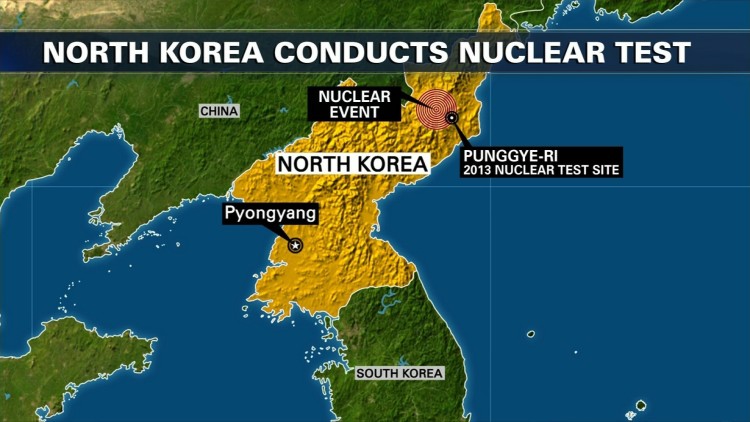A World Apart: The Two Koreas and Six Decades of Separation

(Bloomberg) —South Korea and North Korea could hardly be further apart right now: A new democratic president has been elected in Seoul after the peaceful ouster of his predecessor over a political scandal, while a dictator in Pyongyang has raised the ante with missile launches and yet another nuclear test.
Moon Jae-in’s new government in South Korea has repeatedly said it wants to use both sanctions and dialogue to rein in Kim Jong Un’s regime. Yet U.S. President Donald Trump has indicated he could take much more drastic steps, including military action or a halt on all trade with any country that does business with Kim.
While the North’s Kim dynasty has defied the odds for decades, at times of heightened tension the question of the future of the divided peninsula looms large. These graphics show how far the two halves have grown apart during more than six decades of division. They also point to the huge challenges — and potential benefits — of bringing them back together.
A united Korea of 76 million people could become more powerful and prosperous, at least in the long term. The South’s aging population is one of its greatest economic challenges, and North’s lower median age and higher fertility rate would greatly improve the demographic picture. It would also bring a host of problems, given the malnourished state of many of North Korea’s people and its poor health system.
The gap between the two Koreas today is far greater than that between East and West Germany when the Berlin Wall came down, and it will probably get wider this year as the international community presses sanctions and the North is hit by a drought. A 2015 report from the National Assembly Budget Office estimated that even under a peaceful scenario where Seoul expands humanitarian support ahead of reunification in 2026, it could cost about $2.8 trillion to help bring the North’s gross domestic product to two-thirds that of the South’s. That’s almost 8 times South Korea’s 2017 annual budget.
North Korea is more endowed with natural resources, ranging from coal to rare earths, which would complement South Korea’s industrial output.
Military costs could be cut substantially on both sides of the 38th parallel, allowing the money to be funneled to other areas that lack sufficient investment, like social welfare. According to a U.S. State Department report in 2016, military expenditure accounted for between 14 percent and 23 percent of North Korea’s GDP during the years 2004 to 2014. For South Korea, it was only 2.6 percent of GDP during the same period.
The challenge of rebuilding North Korea’s infrastructure would be huge. Its rail lines are old and in disrepair and highways are scant. Yet it would be an enormous opportunity for the South’s world-class engineering and construction firms, and provide employment for many of the masses of soldiers from the North who would need to be redeployed.
For now a unified peninsula seems a remote prospect, even if Moon favors a softer line. There’s no agreement between the two Koreas or the other major players in the region: China, Japan, Russia and the U.S. And earlier this year, Trump warned of a ” major conflict” with North Korea if diplomatic solutions failed.



No Comment